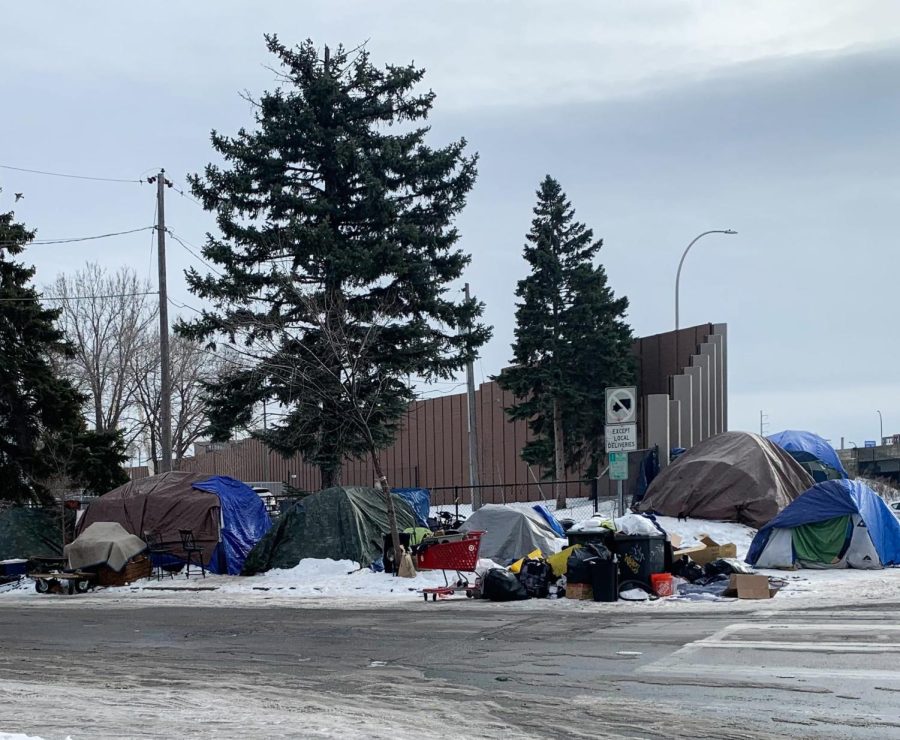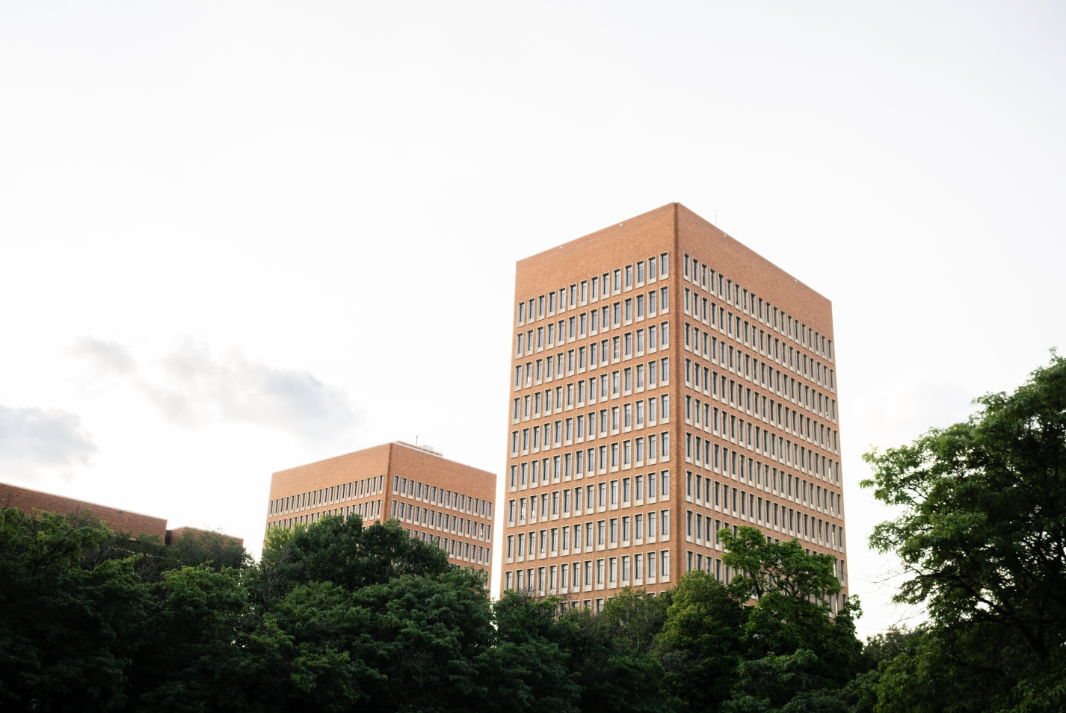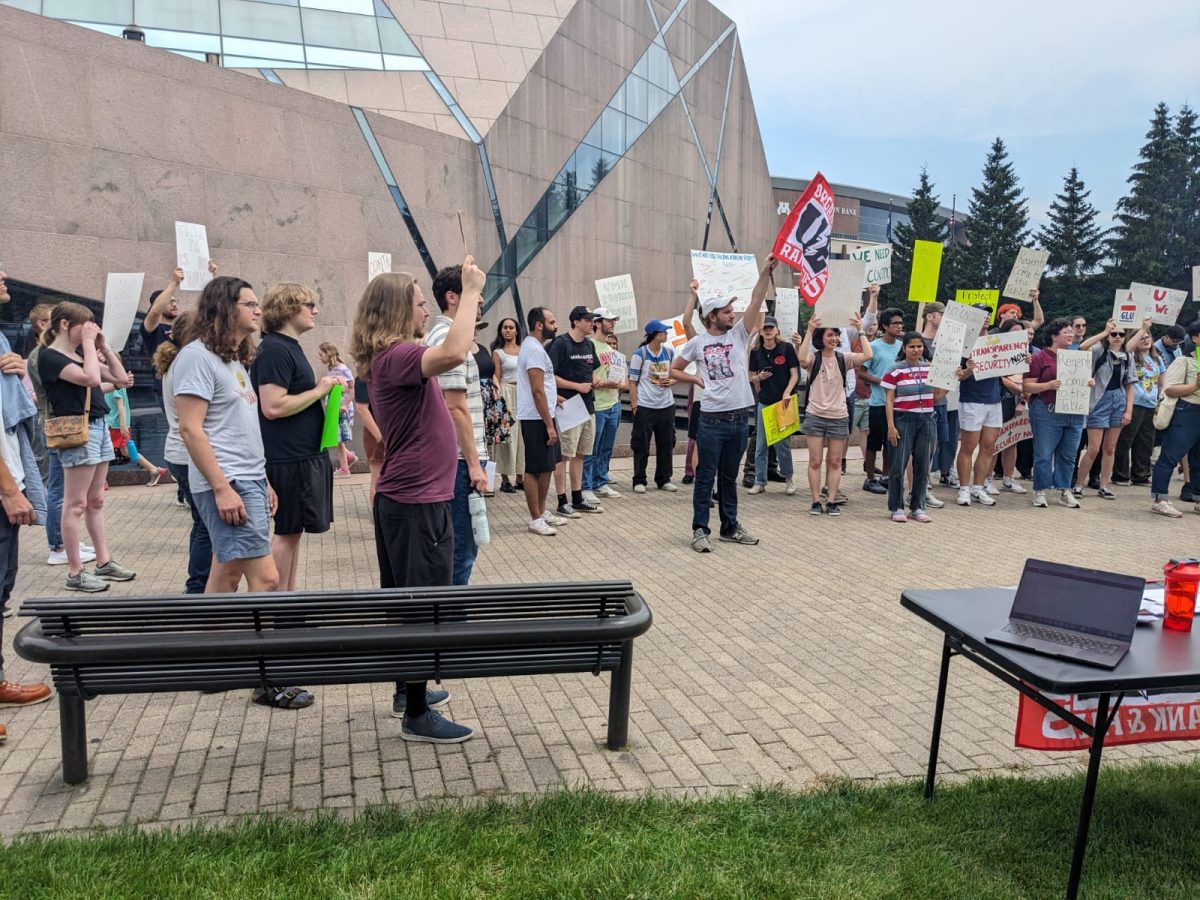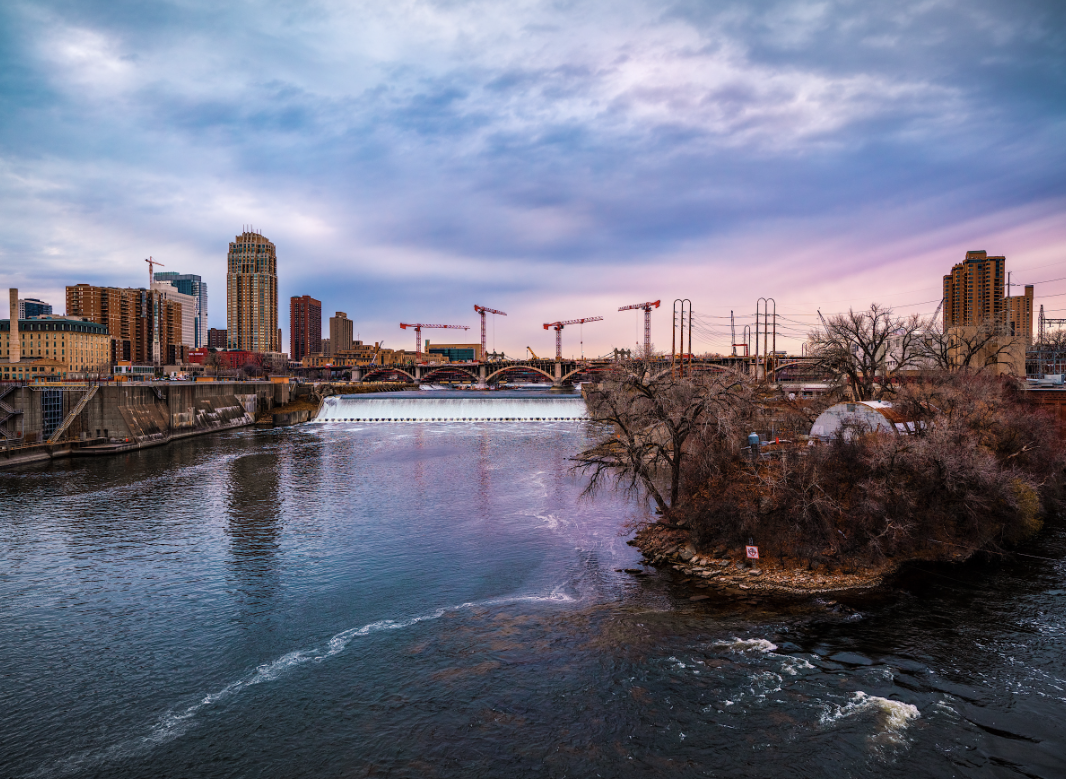After state officials destroyed two homeless encampments in Cedar-Riverside in January, Minneapolis legislators have grown frustrated by what they see as the city’s lack of support for unhoused residents.
The push to clear the encampments came after a shooting on Jan. 12 that left one dead in Minneapolis’ largest homeless encampment, located near 15th Avenue South and Samatar Crossing.
In response to the shooting, Ward 6 Council Member Jamal Osman, who represents Cedar-Riverside, called for the city to close the encampment.
“My staff and I have been begging for action at this encampment for months,” Osman said in a statement. “The Governor, MnDOT, and everyone else involved have avoided responsibility, passed off blame, and used accounting to ignore a homeless encampment in the middle of Cedar-Riverside.”
State patrols from the Minnesota Department of Transportation (MnDOT) showed up with bulldozers six days after the shooting, destroying the homes of more than 100 residents, according to KJ Starr, executive director of the West Bank Business Association (WBBA).
The patrols destroyed another encampment nearby on Cedar Avenue and South 7th Street, which was established about eight months ago, Starr said.
The encampments sat near an interchange between Interstates 35W and 94. State and county officials cleared the encampment because they oversee areas near interstates.
Both encampments were gone by noon after residents had been removed and their belongings scooped into dumpsters. Minneapolis received more than three inches of snow the next day, leaving many who had just lost their belongings in the cold.
“We always had camps in our neighborhood”
Despite his calls for the encampment’s closure, Osman partnered with local nonprofits to place hygienic supplies such as toilets in the Samatar encampment before they were bulldozed.
The WBBA was one of several groups that partnered with Osman’s office. According to Starr, government inaction stalled the installation of the toilets for weeks.
“The city was telling us that it was a state problem, and the state was telling us the city should deal with it,” Starr said. “It was mind blowing, this total failure of government to provide basic human services to people living there and ignoring the impact of that on everyone else living in the neighborhood.”
MnDOT did not respond to the Minnesota Daily’s requests for comment.
The WBBA, along with several other organizations, sent a letter on Jan. 19, the day after Samatar was destroyed, calling the government’s response “incredibly frustrating.” The letter called for a standardized encampment policy across all levels of government to determine when to clear encampments and provide resources to existing ones.
Although encampments exist throughout the city, Cedar-Riverside and its surrounding neighborhoods have a history of housing large encampments. In 2018, the Wall of Forgotten Natives along Franklin Avenue in the Phillips neighborhood became one of the city’s largest encampments.
West Bank was home to one of the city’s first major encampments, The Pines near the Franklin light rail station, which was established around 2016. Like many others, the site now sits vacant and fenced off, Starr said.
Starr said she has fought to ensure unhoused residents in the neighborhood are treated humanely after seeing encampments enclosed by fence and concrete barriers and workers power washing the underside of overpasses drip water on residents and their belongings.
“We have staked a role to play in encampment policy because we always had camps in our neighborhood,” Starr said. “We need humane and consistent policies that are transparent to the public.”
“It’s just a death bell”
Once officials stake out a site to clear, an encampment is surrounded by either police tape or officers. The officers, under helmets and bulletproof vests, openly carry rifles or machine guns and are equipped with megaphones to tell residents to “Get out.”
Encampment residents grab what they can carry and scatter to make room for the bulldozers. Tents rip. Wood cracks. Bicycles scream as metal warps. In a matter of moments, a community turns into an empty dirt lot.
“Part of the reason they are going through to kick everybody out isn’t just to physically remove the people because they shouldn’t be there, but because they’re going to bulldoze it instantly,” said Andy, who grew up experiencing homelessness and currently works to distribute supplies to unhoused residents.
Andy, who did not share his last name for privacy concerns, said he has watched along with encampment residents as officials destroyed and sometimes burned their homes. Some residents leave, some stay to watch and some are too numb from the trauma to verbally react, he said.
Deaths such as the one in the Samatar encampment are typically a “death bell” signaling an encampment’s impending destruction, Andy said. Residents often leave immediately to avoid city and state officials.
Although he was disappointed in Osman’s support of encampment clearings, Andy said Osman was working within a political system that would have destroyed the encampments regardless of his advocacy.
“Maybe [Osman] wants to do it, to support camps more, but he knows from a political standpoint that the people who have the power right now are not interested in that,” Andy said. “Does he want to spend his time and political power on a fight that a lot of people see as just ongoing and never ending?”
The Minneapolis City Council voted on Oct. 20 against pausing homeless encampment clearings after city officials evicted multiple encampments throughout the month. Osman was one of eight council members to vote against the pause.
A Minnesota Department of Health (MDH) report from 2017-2021 found death rates among people experiencing homelessness in the state to be three times higher than the general population, according to the Star Tribune.
The report found 20-year-olds experiencing homelessness had the same mortality rate as a 50-year-olds in the general population.
The report also found people experiencing homelessness have higher death rates among all racial and ethnic groups and experience 10 times higher death rates from substance use compared to the rest of Minnesota’s population.
The hardships of experiencing homelessness combined with the trauma of continuous encampment destructions have left many unhoused residents in a kind of “survival mode,” Andy said.
“They just have to take care of themselves because no one else is going to,” Andy said. “It’s really unfortunate because when these communities have the safety and support to keep each other safe and to flourish, they can, and it’s amazing.”
“It’s basically a free-for-all”
Taking care of unhoused residents was one of Mayor Jacob Frey’s campaign promises in 2017, in which he vowed to end homelessness within five years by implementing inclusive housing policies, according to reporting from MPR.
During his reelection campaign four years later, Frey prioritized addressing the root causes of homelessness and proactively managing encampments.
“Mayor Frey is committed to ensuring public health and safety within and surrounding homeless encampments. He is partnering with neighboring jurisdictions like Hennepin County and St. Paul to do so in a manner that respects the dignity of residents,” Frey’s campaign website states.
Ward 2 Council Member Robin Wonsley countered Frey’s method of using “hundreds of officers” to evict residents with nowhere to go.
“There’s definitely widespread and justifiable concern about having police actively kick people off the streets,” Wonsley said. “Having an over-militarized response to people who have very little to nothing and saying they are a public safety threat … that’s a sad image.”
Frey’s office did not respond to the Minnesota Daily’s requests for comment.
Since 2019, the city has increased its number of affordable housing units by roughly 200 per year and invested more than $200 million into improving its homelessness response system, according to city spokesperson Sarah McKenzie.
The MDH’s homelessness report, which measured the first four years of Frey’s five-year plan, recommended additional investments into health and housing programs with input from people with lived homelessness experience.
In 2022, the final year of Frey’s plan, Hennepin County reported nearly 2,700 unhoused residents in a single night, according to the state’s Homeless Management Information System.
Wonsley said the city’s current policy arbitrarily treats encampments like “Whack-A-Mole” by randomly and inconsistently clearing encampments without consideration for where people living there will go or if they are in the process of obtaining more permanent housing.
“It’s basically a free-for-all — everyone is deflecting to one another,” Wonsley said. “It’s [the government’s] collective responsibility to deal with this, to find better solutions to this, but we need a standardized process that we all understand and that we all uphold.”
However, any attempts at the council passing comprehensive policy regarding homelessness has either been blocked by council members or vetoed by Frey under the city’s government restructure, Wonsley said.
The restructure increased the mayor’s administrative power over city departments and relegated the City Council as a legislative entity.
As a result, Frey has played an “obstructionist role” in having meaningful policy move forward relating to encampments, Wonsley said.
Wonsley said any policymaking will have to come in spite of city leaders who refuse to pursue a comprehensive encampment response.
“While we can’t do anything about the failure of the executive side to do meaningful work around this, we can on the legislative side do whatever we need to do to make change happen,” Wonsley said.





























gardoglee
Mar 27, 2023 at 1:46 pm
They may seem to you to be less than a home, but to the residents they are as close as they can get to stability, and a home. “Home” does not require a lakefront view and thousands of square feet with walk-in closets.
Nah
Mar 17, 2023 at 1:13 am
And by community you mean “small number of activists” right?
lostoncampus
Mar 15, 2023 at 11:10 am
“destroying the homes of more than 100 residents,”
Sorry, these were not “homes” by ANY stretch of the imagination. Allowing it in2020/2021/2022 is exactly WHY you see it still today.